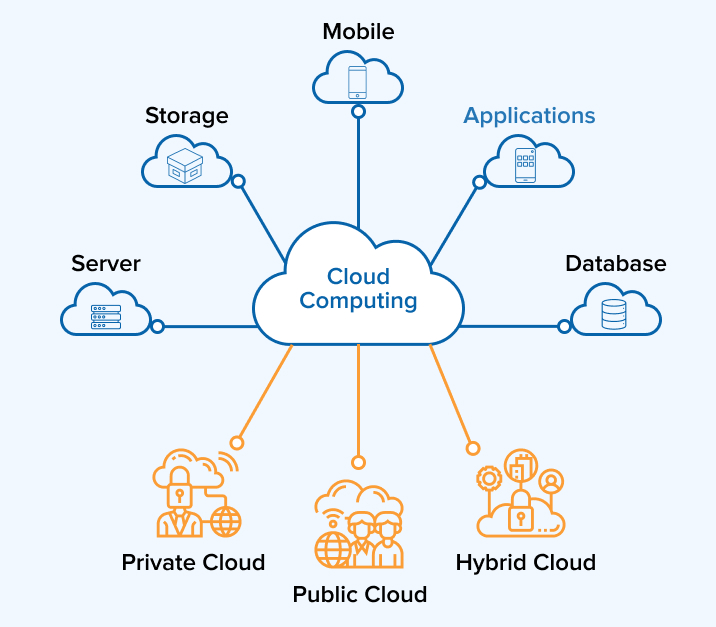LinkDaddy Cloud Services Decoded: Expert Insights into Universal Cloud Service Advancements
LinkDaddy Cloud Services Decoded: Expert Insights into Universal Cloud Service Advancements
Blog Article
Simplify Your Framework With Cloud Services
As businesses browse the ever-evolving landscape of innovation and data management, the duty of cloud solutions in simplifying infrastructure has become increasingly noticeable. How can services efficiently navigate this change and genuinely open the possibility of cloud services for streamlining their infrastructure?
Advantages of Cloud Provider
Cloud solutions supply a streamlined strategy to managing IT framework, supplying organizations with cost-efficiency, scalability, and adaptability. One of the key advantages of cloud solutions is the scalability they provide.
Furthermore, cloud solutions remove the demand for businesses to buy costly equipment and software. This cost-efficiency is a substantial advantage, particularly for little to medium-sized ventures wanting to decrease ahead of time expenses. By utilizing cloud solutions, organizations can access premium IT resources without the significant cost related to conventional framework setups.
Moreover, cloud services offer businesses with the adaptability to access their information and applications from anywhere with a web link. This level of ease of access improves partnership among teams, allows remote job, and raises total productivity. The versatility supplied by cloud services equips businesses to adjust promptly to altering market conditions and customer needs.
Price Financial Savings and Scalability
In addition to the functional advantages highlighted previously, the integration of cloud services into a business's framework comes up with considerable cost savings and boosted scalability. Cloud solutions offer a pay-as-you-go version, enabling organizations to range resources up or down based upon current demands, therefore staying clear of the expenses related to preserving excess capacity. This flexibility allows firms to adjust promptly to varying needs without incurring unnecessary expenses.
In addition, cloud services eliminate the requirement for ahead of time financial investments in software and hardware, reducing resources expenditures. Business expenses are also lessened as companies no much longer require to manage and keep physical servers, resulting in reduced power intake and IT staffing costs. In addition, cloud services give automated updates and upkeep, making certain that the framework stays updated and safe and secure without requiring manual treatments.
Improved Safety And Security Steps
Implementing rigorous security actions is paramount when integrating cloud solutions right into a company's infrastructure to make sure and protect delicate information compliance with sector regulations. Cloud service suppliers provide boosted protection attributes such as data security, firewall software security, and multi-factor authentication to mitigate cybersecurity dangers.
Moreover, regular safety and security audits and conformity evaluations help recognize vulnerabilities and ensure adherence to industry standards. Business can likewise profit from features like computerized security updates and real-time hazard tracking provided by cloud company. By focusing on safety measures and remaining aggressive in dealing with possible dangers, services can confidently utilize cloud solutions while safeguarding their valuable information from unauthorized accessibility or violations.
Transitioning to Cloud Framework
To effectively integrate cloud solutions into a firm's infrastructure, a structured technique that attends to the change in the direction of cloud-based options is crucial. Transitioning to shadow framework includes mindful planning and execution to guarantee a smooth movement process. The primary step is to examine the existing infrastructure and determine which applications and systems appropriate for movement to the cloud. This evaluation needs to think about factors such as information level of sensitivity, compliance requirements, and efficiency demands.
As soon as the analysis is complete, a movement approach you can try this out should be developed. This method should outline the timeline, resources, and obligations for moving each element to the cloud. It is necessary to communicate this strategy plainly to all stakeholders to make sure placement and minimize disruptions during the transition.
During the movement surveillance, process and testing are crucial to identify and deal with any concerns immediately. Normal checkpoints ought to be developed to track progression and make necessary changes. Additionally, training for workers on making use of cloud solutions should be offered to make sure a successful change and make best use of the advantages of the brand-new facilities.
Best Practices for Cloud Adoption
Successful adoption of cloud services rests on the critical alignment of company objectives with technological capacities and business preparedness. To ensure a smooth change to the cloud, organizations must start by conducting a comprehensive analysis of their present infrastructure and recognizing which work are best suited for cloud migration. It is important to entail essential stakeholders from various divisions in the decision-making procedure to gain buy-in and attend web to any type of concerns early on.
An additional ideal practice for cloud adoption is to prioritize safety and conformity. Organizations has to meticulously evaluate the security procedures offered by cloud company and guarantee that their data is shielded according to sector criteria and regulative demands. Implementing durable data encryption, access controls, and routine security audits can assist alleviate risks related to cloud adoption.

Verdict

As companies navigate the ever-evolving landscape of modern technology and data monitoring, the function of cloud solutions in streamlining infrastructure has become increasingly noticeable - linkdaddy cloud services press release. How can services efficiently navigate this transition and really open the potential of cloud solutions for simplifying their facilities?
Cloud services provide a streamlined approach to managing IT infrastructure, giving businesses with scalability, cost-efficiency, and adaptability. By making use of cloud services, services can access premium IT sources without the significant price tag connected with traditional infrastructure arrangements.
To make more tips here certain a smooth transition to the cloud, companies must begin by carrying out an extensive assessment of their existing facilities and determining which work are best fit for cloud movement.
Report this page